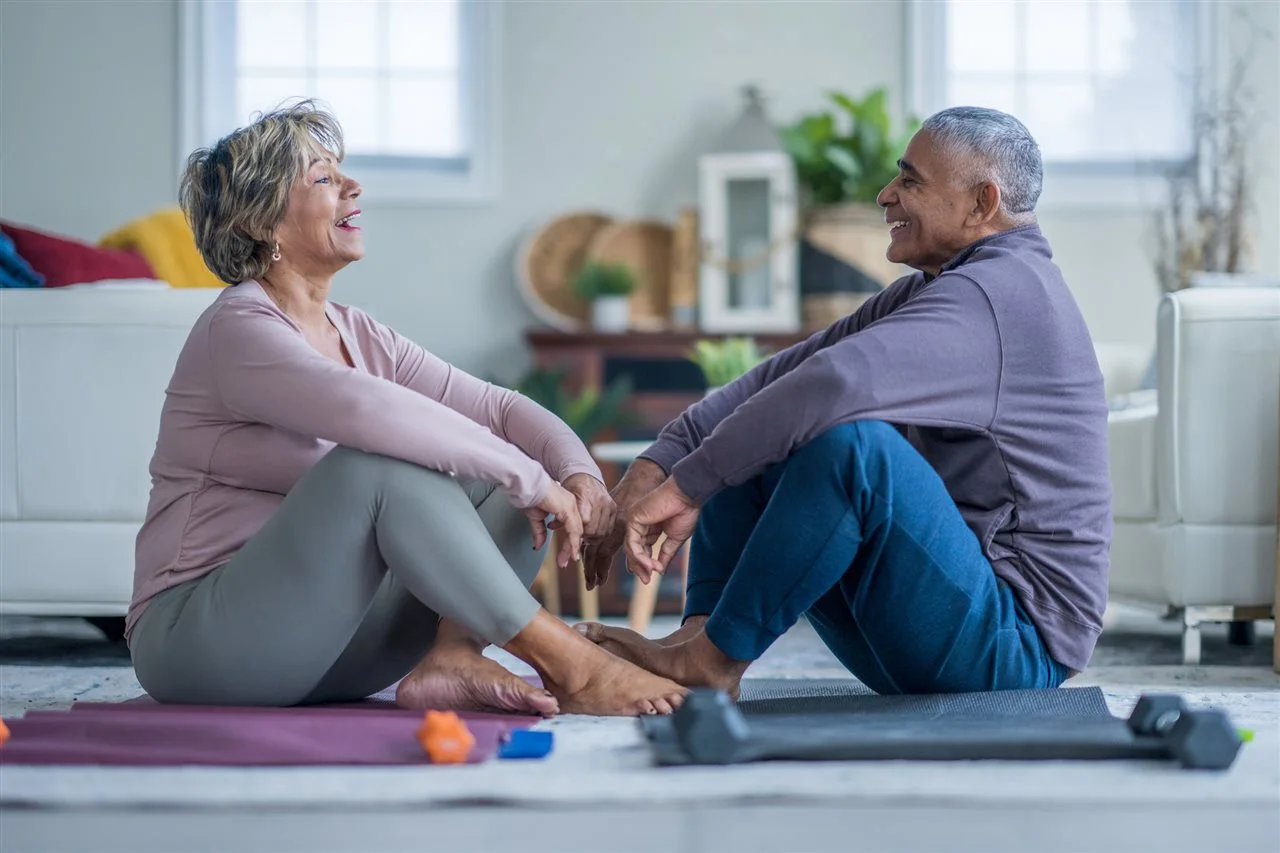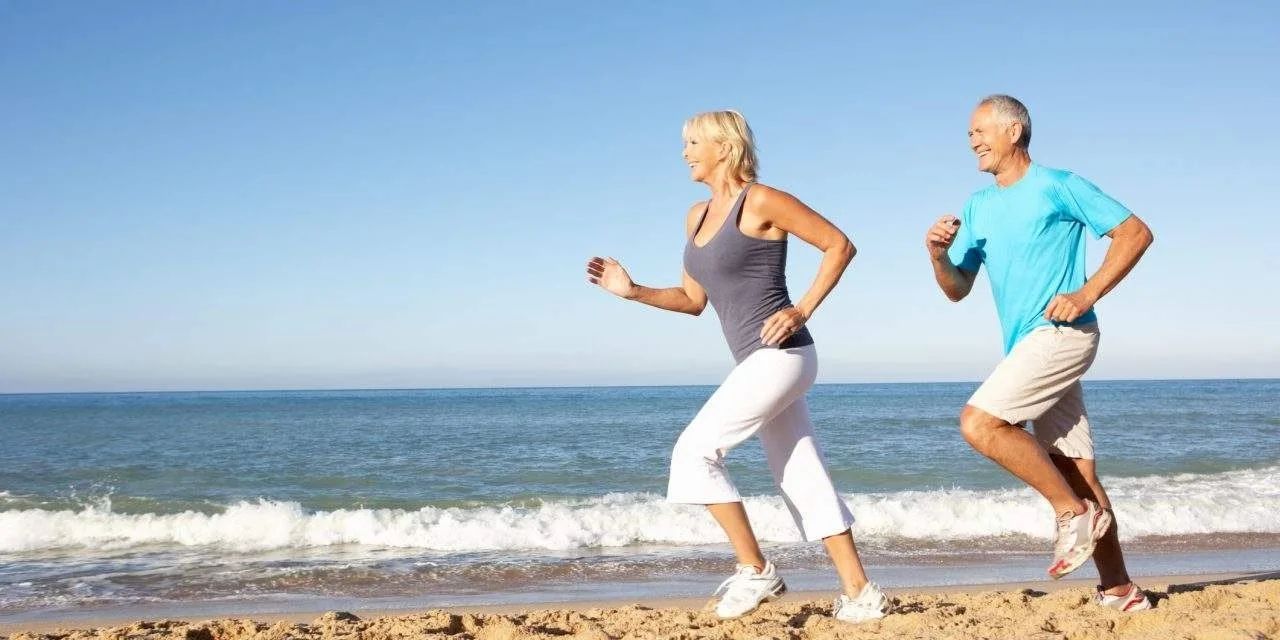
Simple and Safe Exercises for Elderly with Heart Conditions
Do you know what are the best safe exercises for elderly with heart conditions? The heart is generally considered an important organ for maintaining a healthy life. Living with heart disease is naturally challenging. Therefore, being physically active is a must for heart patients. Regular exercise is important when you have heart disease. More physical activity can strengthen your heart muscle and help lower your blood pressure and cholesterol. It can also help you control your blood sugar if you have diabetes.
Low-impact cardio exercises for seniors are often recommended for seniors with heart problems and conditions. There is almost no condition that exercise cannot help improve. So if you have a heart attack, heart failure, or other heart conditions, it doesn’t mean you have to sit around and do nothing. In fact, regular exercise can speed up your recovery, improve your heart function, and even help you get off some of the medications you take. In this article from humanhealthmag, we introduce the simplest exercises suitable for heart patients.
What Does Exercise Do for Your Heart?
safe exercises for elderly with heart conditions Regular physical activity has several benefits for heart health, including:
- Increases heart muscle strength
- Improves lung function
- Lowers blood pressure
- Lowers high cholesterol
- Lowers high blood sugar
- Lowers high triglycerides
- Lowers C-reactive protein levels
- Reduces the risk of heart attack and heart disease

Best Safe Exercises for Elderly with Heart Conditions
As we have already said, safe exercises for elderly with heart conditions have many benefits. As a result, to improve heart health and reduce the risk of heart disease, it is important to include aerobic exercise, strength training, and stretching in your exercise program. Even exercises for after open heart surgery are not harmful to heart patients, and most doctors recommend light exercises. Below we introduce Exercises for Seniors with Heart Disease.
Aerobic exercise
Aerobic exercise is any activity that makes your heart beat faster and your breathing rate increase more than at rest. In this state, oxygenated blood is pumped to the working muscles. Over time, regular aerobic exercise strengthens your heart and lungs, making them work more efficiently. Aerobic exercises include:
- Walking
- Running
- Swimming
- Jump jumping
- Dancing
- Cycling
Strength exercises
Strength exercises are exercises specifically designed to increase muscle strength through resistance training. Resistance can be in the form of weights or through your own body weight with movements such as:
- Swim lifts
- Pull-ups
- Squats
- Lunging
Stretching
Stretching is a type of exercise that increases the flexibility of muscles and the ability to move joints through their full range of motion with movement. Proper muscle flexibility and joint mobility are essential to reducing the risk of injury with physical activity and exercise.

Aerobics
Aerobics is also known as cardio exercise because one of its main effects is on the heart rate. Intensity is defined as mild, moderate, and vigorous depending on the number of beats the heart reaches during exercise. As a rough calculation, a person’s maximum heart rate is 220 minus their age in years. Mild, moderate, and vigorous are when the heart rate reaches below 60 percent, 60 to 80 percent, and more than 80 percent, respectively, during exercise.
Pre-Exercise Steps to Strengthen Your Heart
Always check with your doctor before starting safe exercises for elderly with heart conditions. Your doctor can help you find a plan that is right for your fitness level and condition. Here are some questions to consider:
- How much exercise can I do?
- How many times a week can I exercise?
- What types of exercise should I do?
- What types of activities should I avoid?
- Do I need to take my medications at a certain time around my exercise program?
- Do I need to take my pulse while I exercise?
Your doctor may decide to perform a stress test, exercise test, echocardiogram, or adjust your medications. So always check with your doctor before starting any exercise program.
Important Tips for Doing Safe Exercises for Elderly with Heart Conditions
The most important tips for doing safe exercises for elderly with heart conditions are:
- Don’t push yourself too hard: Rather than not exercising at all or pushing yourself too hard by exercising too much, it’s best to stick to moderate intensity exercise.
- Warm up and cool down before and after exercise: It’s very important to cool down slowly after exercise. We don’t recommend resting completely after exercise. If you’ve been exercising standing up, stretch. If you’ve been exercising sitting down, do gentle leg movements to gradually lower your heart rate.
- If you’re feeling too tired or short of breath, stop exercising and discuss your symptoms with your doctor.
- If you’re experiencing persistent shortness of breath, rest and call your doctor. Your doctor may make changes to your medications, diet, or fluid restrictions.
- Stop the activity if you experience a fast or irregular heartbeat or palpitations: Check your pulse after 15 minutes of rest. If it beats more than 120 times per minute at rest, call your doctor.
- If you experience pain, don’t ignore it: If you have chest pain or pain elsewhere in your body, don’t continue the activity. Doing an activity while in pain can cause stress or damage to your joints.

How Should Heart Patients Exercise?
You should do safe exercises for elderly with heart conditions at least three non-consecutive days a week. Because as the amount of exercise increases, the risk of musculoskeletal injuries also increases. You should also do 10 minutes of warm-up and cool-down, including stretching and flexibility exercises, before and after exercise. 40 minutes of continuous aerobic exercise with intervals should be done, which is beneficial for people with coronary artery disease and arterial stiffness. Note that aerobic exercise should be prescribed by a sports specialist or doctor and at a moderate intensity.
The intensity of exercise in heart patients can be determined using various methods. In addition, measuring blood pressure during activity (depending on the patient’s specific risks to avoid complications from exercise) is of great importance. It is best for heart patients to exercise at the low threshold of symptoms to avoid triggering myocardial ischemia, significant arrhythmias, or symptoms of exercise intolerance. You should avoid activities with a high risk of falling. It should be noted that antihypertensive medication can affect exercise and should be taken into consideration by the physician when prescribing an exercise program.
Signs You Shouldn’t Ignore While Doing Exercises for Elderly with Heart Conditions
If you experience the following while doing safe exercises for elderly with heart conditions, see your doctor:
- Chest discomfort: Severe chest pain, fullness or tightness in the center of the chest, or uncomfortable pressure can indicate several heart disorders. If you experience these, stop exercising and seek professional advice.
- Lightheadedness or dizziness: Experiencing fatigue while exercising is common, especially if you have a sedentary lifestyle. But lightheadedness and dizziness are cause for concern. Don’t ignore them.
- Abnormal heart rhythm: A skipped heartbeat or palpitations is not a common occurrence in most healthy people. Just be aware of these symptoms.
- Shortness of breath: While shortness of breath during exercise is not uncommon, if it persists for a long time or is accompanied by discomfort, it is a warning sign. In such cases, consult your doctor.
- Unusual sweating: Sweating during exercise is normal, although you should see a doctor if the cold sweat or sweating is accompanied by nausea or discomfort.
Concluding Remarks
In this article, we have introduced the best and safe exercises for elderly with heart conditions. According to the information mentioned in this article, physical inactivity is a risk factor in the development of cardiovascular diseases. For this reason, physical activity is recommended as part of a healthy lifestyle. Physical exercises increase the quality of life and reduce healthcare costs. Physical exercises have many physiological benefits. It has been proven that exercise increases maximum oxygen uptake (VO2max), improves heart function, and improves myocardial reserve blood flow.
Therefore, people who have suffered from heart disease or have had angioplasty should do exercise suitable for heart patients. This will help them recover quickly without relying on medication. In addition, they can be useful for strengthening your physical and mental health and prevent future threats from heart disease.
Could you help us make this content even better? What do you love, and what can we improve? Share your thoughts below, feedback is the key to creating better content for YOU. If you also have an experience in this regard, please share it with us and others.

Frequently Asked Questions
What Precautions Should Heart Patients Follow When Exercising?
Always try to do 5 minutes of stretching or movement before exercising to warm up your muscles and heart. Rest when you feel tired. Stop exercising if you feel a strong heartbeat or pain. Also, avoid heavy exercises that are prohibited for heart patients.
What Exercises Are Prohibited for Heart Patients?
Heavy exercises that cause tension and pressure on the heart are prohibited for heart patients. These exercises include weightlifting, sprinting, football, volleyball, etc.
Can Heart Patients Lift Weights?
It is better for heart patients to avoid exercises that put pressure on the heart and cause shortness of breath, including heavy weightlifting. Such exercises may endanger the health of a person with heart disease.
